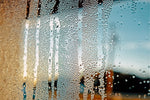The Myth of UV: Why It's Ineffective for Air Purification
Introduction:
In the world of air purification, UV technology has garnered attention for its potential to disinfect the air. However, when scrutinized closely, it becomes evident that UV's effectiveness in air purifiers is largely a misconception. In this comprehensive guide, we will delve into the science behind UV, its limitations, and why focusing on proven methods like HEPA and carbon filtration is a more sensible approach to cleaner air.
The Need for Contact Exposure Time:
One of the key reasons UV technology falls short in air purification is its reliance on contact exposure time. UV light requires a certain duration of exposure to effectively neutralize pathogens. In air purifiers, where air passes through swiftly, the minimal contact time renders the disinfection process ineffective. Unlike water filtration or surface cleaning, air purifiers lack the necessary conditions for UV to perform optimally.
Ozone Emission:
The Hidden Danger: A critical concern associated with UV technology is its emission of ozone. Despite claims to the contrary, UV-equipped air purifiers often release ozone, a harmful pollutant. Ozone, even in small amounts, can have adverse effects on respiratory health. Using an ozone detector will reveal the truth about these emissions, shedding light on the potential risks that UV air purifiers pose.
Added Expenses and Energy Consumption:
Apart from its ineffectiveness, UV technology introduces additional drawbacks. Installing UV components increases costs, both in terms of equipment and maintenance. Furthermore, these systems consume energy, contributing to higher electricity bills. The cumulative expenses and energy consumption make UV air purifiers an impractical choice.
The Gimmick and Marketing Ploy:
In an industry driven by innovation and competition, UV technology has been positioned as a marketable feature. However, the scientific evidence supporting its effectiveness in air purifiers is lacking. Many manufacturers leverage UV's reputation for germicidal properties to create a selling point, despite its minimal impact on air quality. This shift of focus from evidence-based purification to gimmicky marketing undermines the true purpose of air purification.
The Jaspr Approach:
Focus on the Essentials At Jaspr, we prioritize results over gimmicks. Our air purifiers rely on tried-and-true methods that have been proven to work: HEPA and carbon filtration. These technologies effectively capture particles, allergens, and odors from the air, promoting a healthier indoor environment. By avoiding the distractions of UV technology, we stay committed to delivering practical solutions that make a difference.
Conclusion:
In the pursuit of cleaner air, it's essential to separate fact from fiction. UV technology's shortcomings in air purification are evident, from its need for contact exposure time to the emission of harmful ozone. By choosing Jaspr's HEPA and carbon filtration systems, you embrace an approach grounded in science and proven results. Let's prioritize genuine air quality enhancement over marketing-driven myths and pave the way for healthier living spaces.
Back to Blog


